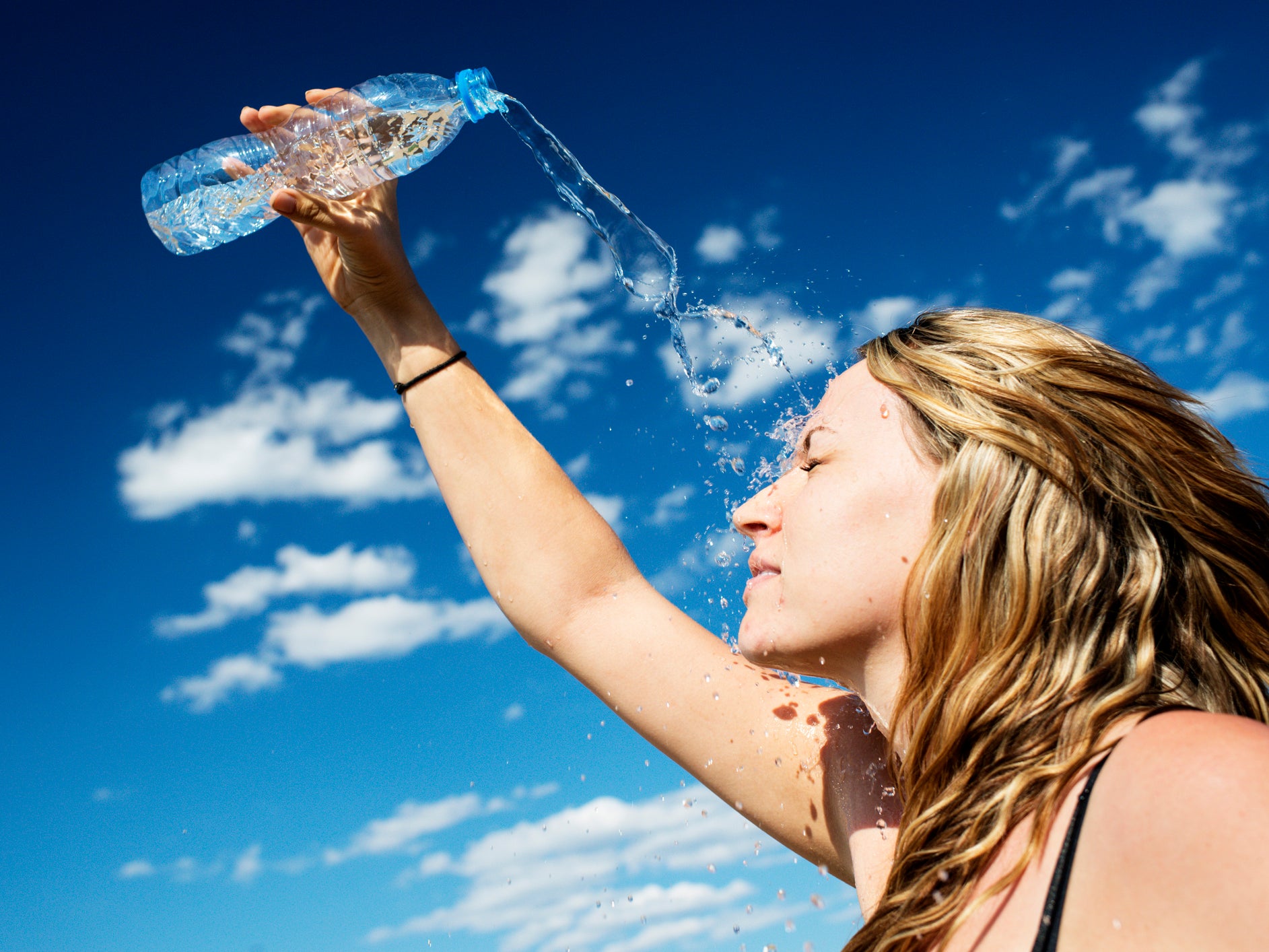Heatstroke symptoms and treatment: The signs you need to know
Britons have been urged to 'stay safe' as heatwave brings the hottest day of the UK

Your support helps us to tell the story
From reproductive rights to climate change to Big Tech, The Independent is on the ground when the story is developing. Whether it's investigating the financials of Elon Musk's pro-Trump PAC or producing our latest documentary, 'The A Word', which shines a light on the American women fighting for reproductive rights, we know how important it is to parse out the facts from the messaging.
At such a critical moment in US history, we need reporters on the ground. Your donation allows us to keep sending journalists to speak to both sides of the story.
The Independent is trusted by Americans across the entire political spectrum. And unlike many other quality news outlets, we choose not to lock Americans out of our reporting and analysis with paywalls. We believe quality journalism should be available to everyone, paid for by those who can afford it.
Your support makes all the difference.After thunderstorms and flooding in some parts of the UK this month, the country is now bathing in fine, sunny weather.
For many, the arrival of higher temperatures is welcome after unsettled weather in recent weeks, but how can you ensure you stay safe and well during very hot days?
If an individual is unable to cool down they could develop heatstroke.
So how can you spot the signs and treat it? Here's everything you need to know.
What is heatstroke?
Heatstroke, otherwise known as sunstroke, occurs when a person's body temperature has become overheated to a harmful degree, St John Ambulance explains.
An individual may develop heatstroke if they've been suffering from heat exhaustion.
When a person spends too much time in the sun or in hot temperatures, they may become too dehydrated.
At this point, they may stop sweating, which means their body will no longer be able to cool itself down. This can result in them developing heatstroke.
If an individual experiencing heat exhaustion is able to cool down within 30 minutes, then their health shouldn't be at serious risk, the NHS states.
However, if they develop heatstroke, then an ambulance should be called on 999 or 112.
What are the symptoms?
Symptoms of heat exhaustion include experiencing a headache, dizziness, loss of appetite, nausea, excessive sweating, cramping, an increased heart rate, a temperature of 38C or above and feeling very thirsty, the NHS outlines.
Adults and children who experience heat exhaustion tend to exhibit similar symptoms. However, children may also appear sleepy.
If a person displaying these signs hasn't improved within 30 minutes, then their condition may have developed into heatstroke.
Symptoms of heatstroke include lack of sweat even if they feel very hot, a temperature of 40C or above, shortness of breathe, confusion, experiencing a seizure, losing consciousness and becoming unresponsive.
How can you help someone experiencing heatstroke?
If you spot that someone may be suffering from heat exhaustion, then they should be moved to a cool environment, the NHS advises.
You should do all that you can to help them cool down, including ensuring that they drink lots of water, cooling their skin with a spray or sponge and having them lie down with their feet slightly raised.
If they haven't improved in 30 minutes and you believe they may have developed heatstroke, then an ambulance should be called on 999 or 112.
While waiting for the ambulance to arrive, St John Ambulance recommends trying to cool them down by either wrapping them in a cold wet sheet or sponging them down.
If their temperature appears to go back to normal, then replace the wet sheet with a dry one.
As you wait for the arrival of a paramedic, keep checking their breathing, pulse and level of response, St John Ambulance says.
If at any point they become unresponsive, then you must check their breathing and ensure their airway is open.
For more information on how to look after a person who has become unresponsive, click here.
In light of the coronavirus pandemic, the British Heart Foundation published advice provided by the Resuscitation Council UK on updated guidance for performing CPR.
How can heatstroke be prevented?
There are certain measures you can take to prevent heat exhaustion and heatstroke in hot temperatures, the NHS states.
These include drinking lots of cold drinks, bathing in cool water, wearing loose clothing, avoiding the sun during peak sun hours and not drinking too much alcohol.
The NHS advises keeping a close eye on those who may be more susceptible to heat exhaustion and heatstroke, including children, older individuals and those who have long-term health conditions.
For all the latest news on the UK weather, click here.
Join our commenting forum
Join thought-provoking conversations, follow other Independent readers and see their replies
Comments